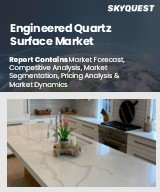
|
시장보고서
상품코드
1847956
카펫 타일 시장 : 최종사용자별, 설치 유형별, 제품 유형별, 소재 유형별, 용도별, 판매채널별 - 세계 예측(2025-2032년)Carpet Tiles Market by End User, Installation Type, Product Type, Material Type, Application, Sales Channel - Global Forecast 2025-2032 |
||||||
카펫 타일 시장은 2032년까지 연평균 복합 성장률(CAGR) 7.03%로 311억 3,000만 달러에 이를 것으로 예측됩니다.
| 주요 시장 통계 | |
|---|---|
| 기준 연도 : 2024년 | 180억 7,000만 달러 |
| 추정 연도 : 2025년 | 193억 3,000만 달러 |
| 예측 연도 : 2032년 | 311억 3,000만 달러 |
| CAGR(%) | 7.03% |
타일 카펫의 원동력, 조달 추진력, 성능 우선순위, 이해관계자의 의사결정을 형성하는 디자인 필수 사항에 대한 명확하고 전략적인 방향성
타일 카펫은 틈새 시장에서 미학, 성능, 라이프사이클 경제성의 균형을 맞추는 전략적 건축 및 상업용 바닥재 솔루션으로 진화해 왔습니다. 이 연구 소개에서는 타일 카펫을 현대 건축, 인테리어 디자인 및 시설 관리의 우선순위 안에 위치시키고, 재료 혁신, 시공 기술 및 최종 사용자의 기대가 어떻게 조달 의사결정을 변화시키고 있는지 강조합니다. 이 글에서는 제품 선택이 지속가능성 목표, 방음 및 단열 성능 요구 사항, 교통량이 많은 환경에서의 운영 현실과 어떻게 교차하는지를 살펴봅니다.
또한, 이번 소개에서는 모듈성 중시, 빠른 리노베이션 주기 요구, 실내 환경 품질 중시 등 주요 촉진요인을 종합적으로 설명합니다. 또한, 상업 및 주거 분야의 이해관계자들이 전통적인 브로드 룸 옵션을 재검토하고, 타겟 교체, 패턴 커스터마이징, 폐기물 감소를 가능하게 하는 타일 형식을 선호하는 이유에 대해서도 설명합니다. 마지막으로, 서론에서는 목적, 분석 범위 및 후속 의사결정에 유용한 통찰력을 명확히 함으로써 독자가 단기 및 중기 계획에 대한 전술적 및 전략적 영향을 모두 이해할 수 있도록 하고, 보고서를 통해 독자의 여정을 구성하고 있습니다.
타일 카펫의 디자인, 사양, 지속가능성, 조달 경로를 재정의하기 위해 기술적, 규제적, 행동적 변화가 어떻게 수렴하고 있는지
타일 카펫을 둘러싼 환경은 기술 발전, 지속가능성에 대한 약속, 건축 환경에서의 사용 패턴 변화의 복합적인 영향으로 변화하고 있습니다. 최근 재료 과학의 발전으로 방오성 강화, 방음성 향상, 재활용 소재의 광범위한 채택이 가능해지면서 제조업체는 순환 경제 원칙에 따라 제품을 재제조하도록 장려하고 있습니다. 동시에 디자인 사양과 컬러 매칭을 위한 디지털 툴을 통해 디자이너는 유지 보수 및 재구성이 쉬운 고도로 차별화된 인테리어를 제공할 수 있어 상업 및 주거 프로젝트에서 채택이 가속화되고 있습니다.
한편, 하이브리드 배치, 활동 기반 업무 환경, 유연한 회의 공간 등 업무 공간 설계의 변화로 인해 신속한 재구성 및 국소적 교체를 지원하는 설치 시스템에 대한 수요가 증가하고 있습니다. 규제와 자발적 인증 기준은 실내 공기질과 구현된 탄소에 대한 기준을 지속적으로 높이고 있으며, 공급망에 재료 추적 및 수명주기 정보를 공개하도록 강요하고 있습니다. 생산의 민첩성, 조달의 투명성, 성능 주장의 명확성이 시장 리더십과 사양의 성과를 결정하고 새로운 경쟁 환경을 조성합니다.
2025년 미국의 새로운 관세 조치의 누적된 비즈니스 및 전략적 영향과 조달, 공급망 및 제품 개발에 미치는 영향
2025 년을 향한 미국의 관세 조치는 타일 카펫 이해 관계자의 조달 전략과 비용 구조에 새로운 복잡성을 가져 왔습니다. 원자재 수입과 완제품에 영향을 미치는 관세 조정으로 인해 총 상륙 비용 계산이 변경되어 유통업체, 사양가, 최종 사용자는 공급업체 포트폴리오와 물류 계획을 재검토해야 합니다. 이러한 규제 환경은 공급의 연속성을 유지하고 가격 변동을 완화하기 위해 니어쇼어링, 재고 계획, 공급업체 다변화의 중요성을 높이고 있습니다.
이에 대응하기 위해 제조업체들은 중요한 인풋을 현지화하고, 공급망을 재구성하여 탄력성을 높이기 위한 노력을 가속화하고 있습니다. 조달팀은 관세 시나리오를 계약 조건, 리드타임 버퍼, 재고 약정 등에 반영하고 있습니다. 또한, 관세 상황은 제품 개발의 선택에 영향을 미치고, 재료의 대체와 가능하면 국산 원료를 사용하도록 유도하고 있습니다. 그 결과, 시장 진출기업들은 진화하는 성능 및 지속가능성 요건을 충족하는 동시에 비용 경쟁력과 규정 준수를 모두 입증해야 한다는 압박에 직면해 있습니다. 그 누적된 영향은 전략적 선견지명, 운영상의 유연성, 투명성 높은 공급업체와의 관계를 중요시하는 시장으로 변모하고 있습니다.
최종 용도, 설치 방법, 제품 디자인, 재료 선택, 적용 배경, 판매 채널이 어떻게 차별화된 수요를 촉진하는지에 대한 종합적인 세분화 인사이트를 제공합니다.
세분화에 대한 체계적인 평가는 제조업체, 사양 개발자 및 유통업체가 투자 및 상업적 활동의 우선순위를 결정할 수 있는 실용적인 렌즈를 제공합니다. 최종 사용자별로 보면, 상업용과 주거용 시장의 움직임은 크게 다르며, 상업용 환경에서는 내구성, 음향 성능, 교체 가능한 모듈성이 요구되는 반면, 주거용 환경에서는 편안함, 디자인 다양성, 쉬운 설치가 중요하게 보입니다. 설치 유형에 따라 선호도와 조달 주기는 글루다운, 인터로킹, 루즈레이, 필앤스틱 등 각 옵션에 따라 달라집니다. 각 시스템은 총 소유 비용과 리노베이션 대 신축 상황에서 채택에 영향을 미치는 명확한 노동, 수명주기, 리노베이션의 의미를 가져옵니다.
목차
제1장 서문
제2장 조사 방법
제3장 주요 요약
제4장 시장 개요
제5장 시장 인사이트
제6장 미국 관세의 누적 영향 2025
제7장 AI의 누적 영향 2025
제8장 카펫 타일 시장 : 최종사용자별
- 상업
- 주택
제9장 카펫 타일 시장 : 설치 유형별
- Glue Down
- Interlocking
- Loose Lay
- Peel And Stick
제10장 카펫 타일 시장 : 제품 유형별
- Graphic
- Patterned
- Striated
- Tonal
제11장 카펫 타일 시장 : 소재 유형별
- 나일론
- 폴리에스테르
- 폴리프로필렌
- 울
제12장 카펫 타일 시장 : 용도별
- 교육
- 헬스케어
- 클리닉
- 병원
- 연구소
- 호스피탈리티
- 오피스
- 회의실
- 오픈 플랜
- 프라이빗 오피스
- 소매
제13장 카펫 타일 시장 : 판매채널별
- 직접 판매
- 유통업체
- 온라인
- 소매업체
제14장 카펫 타일 시장 : 지역별
- 아메리카
- 북미
- 라틴아메리카
- 유럽, 중동 및 아프리카
- 유럽
- 중동
- 아프리카
- 아시아태평양
제15장 카펫 타일 시장 : 그룹별
- ASEAN
- GCC
- EU
- BRICS
- G7
- NATO
제16장 카펫 타일 시장 : 국가별
- 미국
- 캐나다
- 멕시코
- 브라질
- 영국
- 독일
- 프랑스
- 러시아
- 이탈리아
- 스페인
- 중국
- 인도
- 일본
- 호주
- 한국
제17장 경쟁 구도
- 시장 점유율 분석, 2024
- FPNV 포지셔닝 매트릭스, 2024
- 경쟁 분석
- Shaw Industries, Inc.
- Mohawk Industries, Inc.
- Wuxi Diamond Carpet Manufacturing Co., Ltd.
- Tarkett Floor Covering(Shanghai) Co.,Ltd.
- Forbo Holding Ltd.
- Milliken & Company
- J+J Flooring Group, LLC
- Gerflor Group
- Flor, LLC
- Interface, Inc.
The Carpet Tiles Market is projected to grow by USD 31.13 billion at a CAGR of 7.03% by 2032.
| KEY MARKET STATISTICS | |
|---|---|
| Base Year [2024] | USD 18.07 billion |
| Estimated Year [2025] | USD 19.33 billion |
| Forecast Year [2032] | USD 31.13 billion |
| CAGR (%) | 7.03% |
A clear and strategic orientation to carpet tile dynamics, procurement drivers, performance priorities, and design imperatives shaping stakeholder decisions
Carpet tiles have evolved from a niche specification into a strategic architectural and commercial flooring solution that balances aesthetics, performance, and lifecycle economics. The introduction to this study situates carpet tiles within contemporary construction, interior design, and facilities management priorities, highlighting how material innovation, installation technology, and end-user expectations are reshaping procurement decisions. This opening explores how product choices now intersect with sustainability targets, acoustic and thermal performance requirements, and the operational realities of high-traffic environments.
In addition, this introduction synthesizes key drivers such as growing emphasis on modularity, the desire for rapid refurbishment cycles, and the premium placed on indoor environmental quality. It explains why stakeholders across commercial and residential domains are reconsidering traditional broadloom options in favor of tile formats that allow targeted replacement, pattern customization, and reduced waste. Finally, the introduction frames the reader's journey through the report by clarifying objectives, the scope of analysis, and the decision-useful insights that follow, ensuring that readers understand both tactical and strategic implications for short- and medium-term planning.
How technological, regulatory, and behavioral shifts are converging to redefine carpet tile design, specification, sustainability, and procurement pathways
The landscape for carpet tiles is transforming under the combined influence of technological advancement, sustainability commitments, and shifts in built-environment use patterns. Recent material science advances enable enhanced stain resistance, improved acoustic dampening, and broader incorporation of recycled content, prompting manufacturers to reformulate products that align with circular economy principles. Simultaneously, digital tools for design specification and color matching allow designers to deliver highly differentiated interiors that are easier to maintain and reconfigure, accelerating adoption in both commercial and residential projects.
Meanwhile, changes in workplace design-favoring hybrid arrangements, activity-based work settings, and flexible meeting spaces-have driven demand for installation systems that support rapid reconfiguration and localized replacement. Regulation and voluntary certification criteria continue to raise the bar for indoor air quality and embodied carbon, compelling supply chains to trace materials and disclose life-cycle information. Together, these forces are not isolated; they interact to produce a new competitive environment where agility in production, transparency in sourcing, and clarity in performance claims determine market leadership and specification outcomes.
The cumulative operational and strategic consequences of new United States tariff measures in 2025 and their influence on sourcing, supply chains, and product development
United States tariff actions announced for 2025 have introduced new complexities into sourcing strategies and cost structures for carpet tile stakeholders. Tariff adjustments that affect raw material imports and finished goods alter total landed cost calculations, prompting distributors, specifiers, and end users to revisit supplier portfolios and logistics plans. This regulatory environment increases the importance of nearshoring, inventory planning, and supplier diversification to maintain continuity of supply and to mitigate pricing volatility.
In response, manufacturers are accelerating initiatives to localize critical inputs and to re-engineer supply chains for greater resilience. Procurement teams are increasingly factoring tariff scenarios into contract terms, lead-time buffers, and inventory commitments. Moreover, the tariff landscape is influencing product development choices, encouraging materials substitution and the use of domestic feedstocks where feasible. As a consequence, market participants face heightened pressure to demonstrate both cost competitiveness and compliance while continuing to meet evolving performance and sustainability requirements. The cumulative impact is a market that rewards strategic foresight, operational flexibility, and transparent supplier relationships.
Comprehensive segmentation insights revealing how end-use, installation method, product design, material selection, application context, and sales channel drive differentiated demand
An organized assessment of segmentation provides actionable lenses through which manufacturers, specifiers, and distributors can prioritize investments and commercial activities. Based on End User, market behavior diverges significantly between Commercial and Residential applications, with commercial environments demanding durability, acoustic performance, and replacement modularity, while residential preferences emphasize comfort, design variation, and easy installation. Based on Installation Type, preferences and procurement cycles vary across glue down, interlocking, loose lay, and peel and stick options; each system brings distinct labor, lifecycle, and refurbishment implications that influence total cost of ownership and adoption in retrofit versus new-build contexts.
Based on Product Type, demand differentiated by graphic, patterned, striated, and tonal offerings highlights the role of aesthetic storytelling and brand expression in specification decisions, where graphic and patterned tiles are increasingly used to define zones and communicate identity. Based on Material Type, choices among nylon, polyester, polypropylene, and wool reflect trade-offs between durability, stain resistance, sustainability credentials, and price, and thus determine suitability for high-traffic institutional settings versus premium residential projects. Based on Application, adoption patterns span education, healthcare, hospitality, offices, and retail, with healthcare further divided into clinics, hospitals, and laboratories, and offices further segmented into conference rooms, open plan areas, and private offices; each sub-application imposes distinct regulatory, hygiene, and acoustic standards that shape product requirements. Based on Sales Channel, direct sales, distributors, online platforms, and retailers each present unique route-to-market dynamics, margin structures, and service expectations, requiring tailored commercial playbooks and post-sale support capabilities.
Regional market characteristics and strategic imperatives that influence product adaptation, supply chains, regulatory compliance, and specification behavior across global geographies
Regional dynamics shape production capabilities, regulatory expectations, and end-user preferences, underlining the need for geographically-adaptive strategies. In the Americas, procurement decisions are influenced by a mix of legacy specification practices and growing sustainability mandates, with a strong emphasis on lifecycle performance and supplier transparency; logistic considerations and tariff sensitivities are particularly salient for transnational sourcing across the region. In Europe, Middle East & Africa, regulatory frameworks and voluntary green procurement standards exert strong influence on material selection and certification priorities, while aesthetic and heritage concerns in specific markets demand tailored design offerings; meanwhile, infrastructure and urbanization trends in the Middle East and parts of Africa open opportunities for new commercial and hospitality projects that prioritize resilient materials.
In Asia-Pacific, rapid urban development combined with diverse market maturities creates a patchwork of opportunities ranging from high-volume procurement in healthcare and offices to premium residential demand in mature urban centers. Supply chain concentration and raw material sourcing in the region also affect global manufacturing footprints, with many producers leveraging local material streams to optimize cost and delivery. Across all regions, success rests on balancing global product platforms with local adaptation in specification, installation practices, and after-sales support to meet varied regulatory, aesthetic, and performance expectations.
Competitive dynamics and strategic positioning among manufacturers, distributors, and niche innovators that determine specification success, supply chain resilience, and customer retention
Leading companies within the carpet tile ecosystem are aligning product development, sustainability commitments, and go-to-market strategies to differentiate on both performance and service. Manufacturers are investing in modular product systems and recyclability initiatives to capture procurement programs focused on total cost of ownership and environmental impact. At the same time, some suppliers are building digital tools to support specification, color management, and lifecycle reporting, enabling architects and facility managers to make informed trade-offs and to document compliance with local standards.
Distributors and retailers are enhancing value propositions by bundling installation services, extended warranties, and maintenance programs that simplify decision-making for buyers. Strategic partnerships between material suppliers and finishers are emerging to secure feedstock consistency while accelerating new product introductions. Competitors that demonstrate agile production, transparent supply chains, and credible sustainability metrics tend to perform better in tendered projects and long-term maintenance contracts. Simultaneously, smaller niche players exploit design-led differentiation to serve hospitality and premium residential segments where bespoke aesthetic solutions command higher margins.
Practical and integrated strategic actions for industry leaders to strengthen supply chain resilience, accelerate sustainable innovation, and optimize commercial channels
Industry leaders should pursue a sequential set of strategic moves to capture upside in a complex, evolving marketplace. First, prioritize supply chain resilience by diversifying feedstock sources, investing in nearshoring where commercially viable, and incorporating tariff scenario planning into procurement contracts to reduce exposure to policy shifts. Second, accelerate product development focused on recyclability, reduced embodied carbon, and demonstrable indoor environmental performance, pairing technical innovation with verifiable disclosures that support specification by architects and sustainability teams. Third, optimize installation systems by offering compatibility across glue down, interlocking, loose lay, and peel and stick formats, thereby addressing varied labor markets and refurbishment needs while reducing lifecycle disruption for clients.
In parallel, enhance route-to-market capabilities by strengthening direct sales channels, expanding distributor relationships with clear service-level agreements, and integrating online platforms for project quoting and ordering. Invest in digital tools that streamline color and pattern selection, lifecycle reporting, and maintenance scheduling to improve specification conversion and post-sale retention. Lastly, align commercial models to offer flexible contracting and post-installation support, enabling customers to prioritize total cost of ownership and predictable performance over simple upfront price comparisons. Implementing these actions in an integrated manner will create defensible advantages in both new specification wins and long-term maintenance portfolios.
A rigorous multi-source research methodology blending primary stakeholder interviews, expert consultation, and reproducible secondary analysis to support evidence-based conclusions
The research underpinning this report combines primary stakeholder interviews, expert consultation, and systematic analysis of industry literature and publicly available company disclosures. Primary inputs included structured conversations with product managers, procurement leads, facilities operators, and installation specialists to validate performance expectations, procurement constraints, and emerging preferences across end-use segments. Expert consultation provided contextual understanding of regulatory trends, tariffs, and certification regimes, while product-level technical data was used to assess comparative attributes across materials and installation systems.
Secondary research incorporated manufacturer specifications, standards documentation, and trade association guidance to ensure factual accuracy and to triangulate claims about durability, acoustic performance, and recyclability. Data synthesis relied on a reproducible framework that prioritized cross-validation between primary insights and secondary documentation to minimize bias. Finally, scenario analysis was applied to understand the potential operational impact of tariff changes and supply chain disruptions, helping to generate actionable recommendations that balance near-term mitigation with longer-term strategic positioning.
Concise strategic takeaways emphasizing adaptability, validated sustainability, and operational agility necessary for sustained specification success
This conclusion distills the preceding analysis into a concise set of strategic takeaways that emphasize adaptability, transparency, and product differentiation. The carpet tile sector is being reshaped by a combination of material innovation, evolving installation preferences, and policy-driven sourcing considerations, and companies that can reconcile these forces through transparent supply chains and demonstrable environmental performance will be best positioned to win specification and long-term maintenance contracts. Operational resilience and flexible commercial channels are equally important in an environment where tariff adjustments and logistics constraints can rapidly alter competitive economics.
In closing, the market rewards organizations that integrate technical product leadership with commercial agility and credible sustainability narratives. Decision-makers should use the insights in this report to prioritize investments that deliver measurable customer value, reduce lifecycle costs, and increase specification success in both new-build and refurbishment contexts. By doing so, stakeholders will be able to navigate near-term disruptions while building capabilities for sustained differentiation.
Table of Contents
1. Preface
- 1.1. Objectives of the Study
- 1.2. Market Segmentation & Coverage
- 1.3. Years Considered for the Study
- 1.4. Currency & Pricing
- 1.5. Language
- 1.6. Stakeholders
2. Research Methodology
3. Executive Summary
4. Market Overview
5. Market Insights
- 5.1. Integration of sustainable bio-based fibers and recycled materials in carpet tile manufacturing to reduce carbon footprint
- 5.2. Increasing adoption of modular carpet tile designs with customizable patterns and colors for office spaces
- 5.3. Rising demand for antimicrobial and stain-resistant carpet tiles in healthcare environments for infection control
- 5.4. Impact of digital printing technology enabling intricate designs and rapid prototyping of carpet tile collections
- 5.5. Growth of adhesive-free and reusability-focused carpet tile installation methods for commercial refurbishment projects
- 5.6. Emphasis on circular economy models offering take-back programs and refurbishment services for end-of-life carpet tiles
- 5.7. Growing trend of acoustic performance optimization in carpet tile products for open-plan offices to reduce noise
- 5.8. Surge in remote working driving demand for stylish, easy-to-install carpet tiles in residential home office makeovers
- 5.9. Development of smart carpet tiles with embedded sensors for workplace occupancy monitoring and energy management
6. Cumulative Impact of United States Tariffs 2025
7. Cumulative Impact of Artificial Intelligence 2025
8. Carpet Tiles Market, by End User
- 8.1. Commercial
- 8.2. Residential
9. Carpet Tiles Market, by Installation Type
- 9.1. Glue Down
- 9.2. Interlocking
- 9.3. Loose Lay
- 9.4. Peel And Stick
10. Carpet Tiles Market, by Product Type
- 10.1. Graphic
- 10.2. Patterned
- 10.3. Striated
- 10.4. Tonal
11. Carpet Tiles Market, by Material Type
- 11.1. Nylon
- 11.2. Polyester
- 11.3. Polypropylene
- 11.4. Wool
12. Carpet Tiles Market, by Application
- 12.1. Education
- 12.2. Healthcare
- 12.2.1. Clinics
- 12.2.2. Hospitals
- 12.2.3. Laboratories
- 12.3. Hospitality
- 12.4. Offices
- 12.4.1. Conference Rooms
- 12.4.2. Open Plan
- 12.4.3. Private Offices
- 12.5. Retail
13. Carpet Tiles Market, by Sales Channel
- 13.1. Direct Sales
- 13.2. Distributors
- 13.3. Online
- 13.4. Retailers
14. Carpet Tiles Market, by Region
- 14.1. Americas
- 14.1.1. North America
- 14.1.2. Latin America
- 14.2. Europe, Middle East & Africa
- 14.2.1. Europe
- 14.2.2. Middle East
- 14.2.3. Africa
- 14.3. Asia-Pacific
15. Carpet Tiles Market, by Group
- 15.1. ASEAN
- 15.2. GCC
- 15.3. European Union
- 15.4. BRICS
- 15.5. G7
- 15.6. NATO
16. Carpet Tiles Market, by Country
- 16.1. United States
- 16.2. Canada
- 16.3. Mexico
- 16.4. Brazil
- 16.5. United Kingdom
- 16.6. Germany
- 16.7. France
- 16.8. Russia
- 16.9. Italy
- 16.10. Spain
- 16.11. China
- 16.12. India
- 16.13. Japan
- 16.14. Australia
- 16.15. South Korea
17. Competitive Landscape
- 17.1. Market Share Analysis, 2024
- 17.2. FPNV Positioning Matrix, 2024
- 17.3. Competitive Analysis
- 17.3.1. Shaw Industries, Inc.
- 17.3.2. Mohawk Industries, Inc.
- 17.3.3. Wuxi Diamond Carpet Manufacturing Co., Ltd.
- 17.3.4. Tarkett Floor Covering (Shanghai) Co.,Ltd.
- 17.3.5. Forbo Holding Ltd.
- 17.3.6. Milliken & Company
- 17.3.7. J + J Flooring Group, LLC
- 17.3.8. Gerflor Group
- 17.3.9. Flor, LLC
- 17.3.10. Interface, Inc.



















